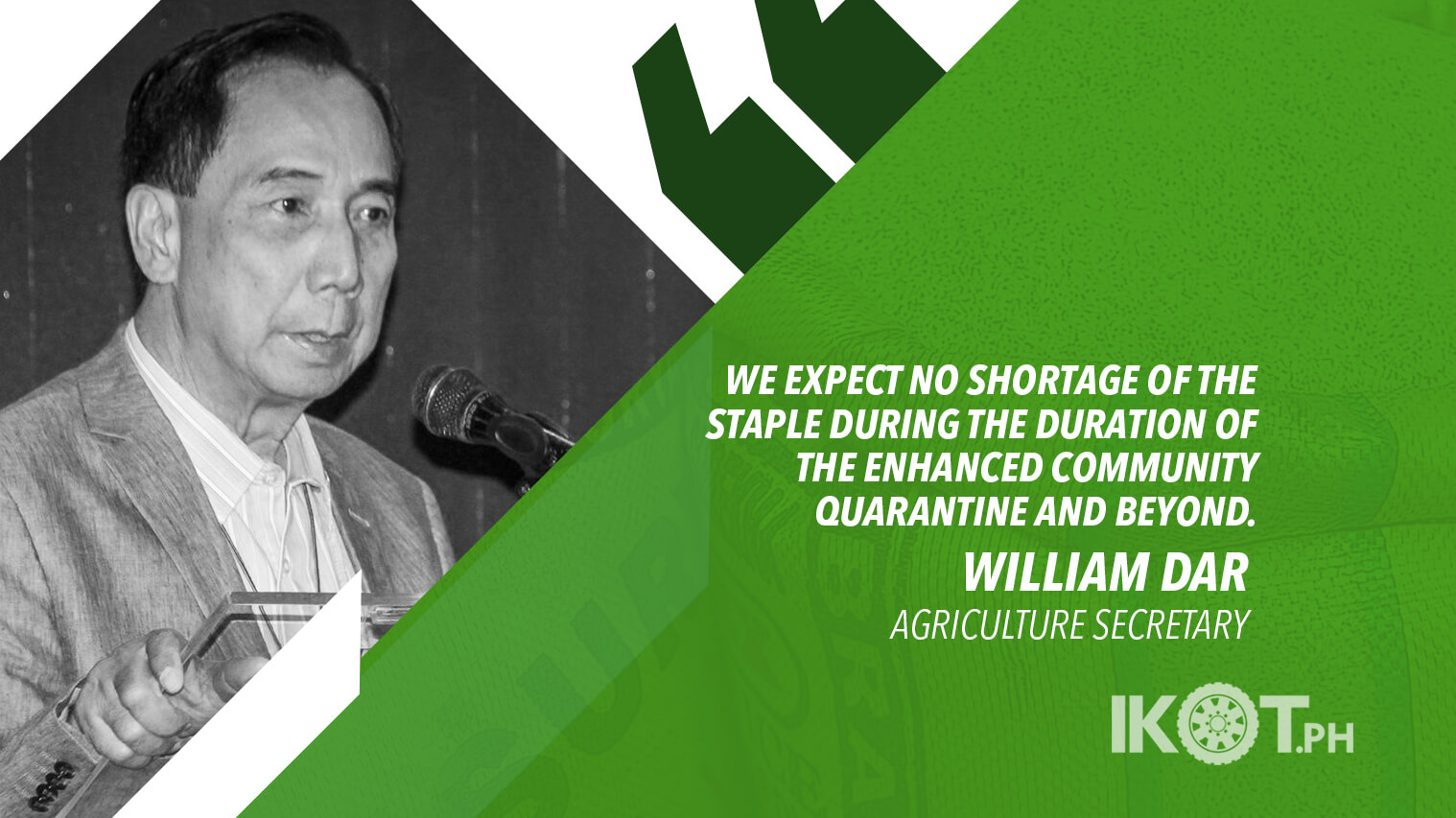The Philippines has enough rice for the next four months, with additional supply from dry season harvest expected to sustain stock inventory level until June, Agriculture Secretary William Dar has assured.
Citing the latest data from the Philippine Statistics Authority (PSA), Dar said that rice stock is expected to reach 2.661 million metric tons, or equivalent to 75 days, by end of the first quarter of the year. Filipinos consume an average of 35,369 MT per day or about 1.2 million per month.
“With harvest already coming in, along with the steady arrival of imported rice, we expect no shortage of the staple during the duration of the enhanced community quarantine and beyond,” the agriculture chief said.
By the end of June, rice inventory level is projected at 2.38 million MT, which is enough for 67 days. As a strategy, the DA will maximize government-supported expansion areas as a catch-up plan to stabilize food availability.
“We are considering early planting in most areas to boost production.”
The agriculture head said that they are considering early planting in most areas, including regions 2 and 3 to boost production during the third quarter of 2020.
The DA will also expand coverage in area planted, on top of the existing rice production areas covered by the Rice Competitiveness Enhancement Fund. At the same time, the use of hybrid seeds is encouraged to boost productivity, he said.
“We’re trying our best to cover all areas and concerns to ensure that Filipinos will have a stable supply of rice and other agricultural commodities,” Dar said.
He reiterated the importance of ensuring the unhampered movement of food commodities, as well as agri-fishery products, inputs, activities, and personnel in the food value chain amid the implementation of the enhanced community quarantine.
“Cooperation, coordination, and understanding of each other’s plight can go a long way.”
“We can’t be complacent now. Cooperation, coordination, and understanding of each other’s plight can go a long way. Let’s help each other, consumer and producers alike,” Dar said.
Likewise, he called for the establishment of so-called mobility corridors for the food supply chain to move with ease –including personnel, processing, delivery, distribution, and management in food production.

